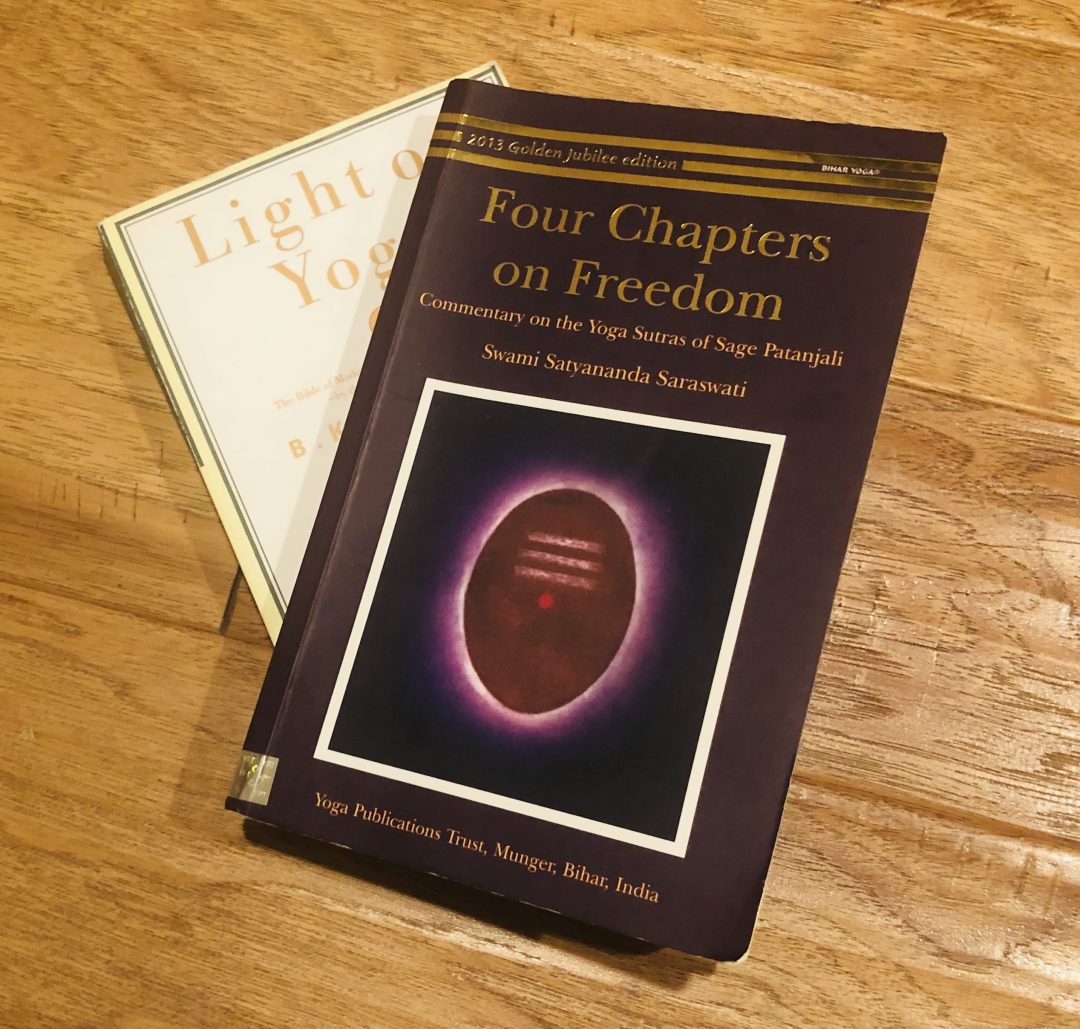
This past week, in my yoga class, we talked about the discipline of sadhana, the first Yoga Sutra in the second chapter of the Yoga Sutras text written by Sage Patanjali. The Yoga Sutras or in English, Verses on Yoga, are a scripture of 196 sutras (verses) that represent the Philosophy of Yoga.
In this sutra, The Discipline of Sadhana, sadhana refers to your daily practice or daily routine. So since it was the first Monday of the year, and New Year resolutions are likely still on the forefront of people’s minds, I thought it was a good yoga sutra to start the year off with. I have also talked about having a daily sadhana on the blog, so click here to read the 3 questions you should ask yourself when creating your sadhana.
The Yoga Sutras are written in Sanskrit and below is the Sanskrit version of the Discipline of Sadhana.
Tapaḥsvādhyāyeśvarapranidhānāni kriyāyogaḥ
That looks complicated, I know…let’s break this sutra down.
The easier to read version is: Tapas, swadhyaya and Ishwara pranidhana constitute kriya yoga.
So the literal translation of tapas is to burn, to create heat, or produce energy. In this case, it refers to self-purification by a process in which you illuminate your imperfections. The imperfections or “impurities” you may be small where only a simple washing will do. In other cases, the impurities may be big requiring that you actually “burn” those material impressions. For example, to make this more relevant, maybe you have some debt and simply giving up a meal out each week is enough or maybe you have a lot of debt and actually need to consider returning items you may have purchased, canceling services you can no longer afford, or maybe even selling that extra car in your driveway.
Swadhyaya means to study or one’s own analysis. However, in this sutra, it is referring to how to perceive yourself from different perspectives. Swadhyaya refers to the detailed study of you, including the physical, mental, emotional, and spiritual aspects of your life. This aspect of the sutra ignites your inner consciousness and creates a deep sense of self-perception. In the busyness of our lives, we tend to first neglect ourselves, taking care of what our loved ones need, our employer, our friends, and as a result our self-care, our goals, our time off comes last.
Next is Ishwara pranidhana. Usually, it means to surrender to God, but here it is referring to your innermost awareness. I like to say it’s a surrender to self, an ability to truly live your life fully because of your heightened inner awareness. Half the time we don’t achieve our goals because we are too distracted to know what we actually want. So Ishwara allows you to be more in alignment and authentic with the person you want to become.
And finally, kriya yoga is the practical application of yoga. It involves all of the above, self-purification, self-observation, self-awareness.
I think this sutra, The Discipline of Sadhana, is a great way to begin the new year because it touches on so many aspects of how we generally think about New Year resolutions or even setting goals in general.
We applied each aspect of the sutra on our yoga mat throughout our practice last week and hopefully created a path to continue that same awareness and same discipline off the mat. You are responsible for the life you want. You will have to fight for it though, you will have to be committed to it. If you’re reading this blog, you are already showing up for yourself. Just stick with it!
Talk soon,

+ show Comments
(review Comment Policy)
- Hide Comments
add a comment